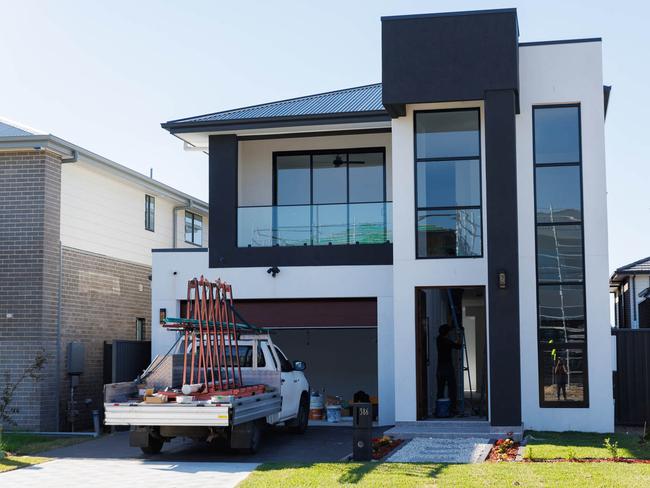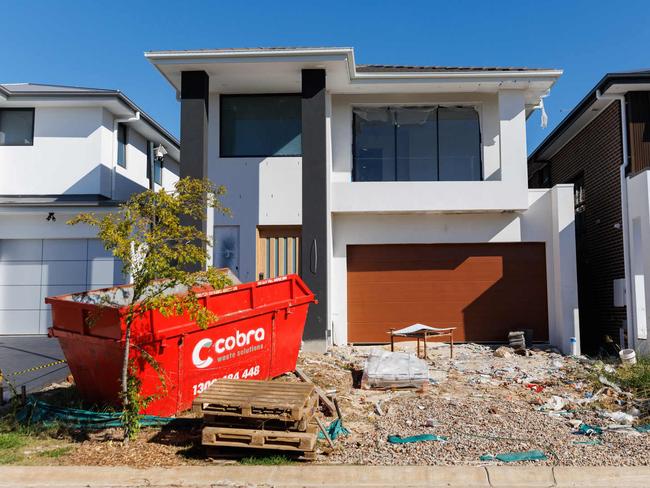Epic collapse that’s killing housing supply
Several crucial factors are preventing more Aussies getting into a new home, including the downfall of a vital part of the industry.
Property
Don't miss out on the headlines from Property. Followed categories will be added to My News.
New home approvals per capita are at decade-lows right now, exacerbating a long-term undersupply of homes in Australia. Meantime, demand for both owner-occupier and rental housing is high, not just because of record overseas migration but also because of demographic changes.
Australia’s population is about 27 million and there are about 11 million homes, according to Reserve Bank figures. There is a clear need for more supply, and the Federal and state and territory governments have finally agreed on a plan to accelerate the building of new homes across Australia.
But plenty of experts don’t think their lofty ambition of building 1.2 million well-located homes over the next five years under the National Housing Accord is achievable, largely because some factors stifling new supply are outside governments’ control and cannot be quickly and easily overcome.

WHAT’S IN THE WAY OF MORE NEW HOME BUILDS?
Two of the biggest obstacles in raising supply are the red tape developers face in some areas, making the approvals process harder and lengthier, and NIMBY (Not in My Backyard) attitudes within local communities who do not want new development – especially apartments – in their areas.
In my view, the most effective way to raise supply is the release of more state-owned land for development, a reduction in statutory costs for developers, a swifter approvals process, and a sensible review of rezoning opportunities in areas that would cope with higher-density living. These elements are crucial because the average new apartment or land subdivision has hundreds of thousands of dollars of government costs embedded in it, and we could potentially channel much of those savings directly to the buyers if communities and all levels of government co-operate. Given the high demand for housing today, you may be wondering why we’re not building enough new homes.

Many issues are making that tough right now, starting with challenges in the building industry.
The end of Covid created global supply chain bottlenecks, which meant projects sat idle while builders waited for materials to be shipped. Meantime, tight supply/demand pushed materials prices continuously higher.
Wages went up, too, due to a shortage of tradies. Many are working in better-paid jobs building state infrastructure projects launched by governments as part of the pandemic economic recovery. So, home builders are being forced to pay more to attract workers, thereby raising their costs.
All of this has led to delayed completions, which have been trending lower for five years. Many new homes commenced at the same time in 2021 and 2022 under HomeBuilder, and this has created a backlog of homes waiting for their finishes – that is, drywalls, windows, painting, and so on.
RECORD NUMBERS OF BUILDERS COLLAPSE INTO ADMINISTRATION
Many small builders have not survived because they could not absorb rising costs on fixed-price projects.
The latest ASIC figures show 2,439 builders have entered administration over the 12 months to 5 May. That’s 34 per cent higher than at the same time in 2023 and up 147 per cent on the same time in 2022. On top of that, we’ve seen the fastest increase in interest rates ever, and as most new projects are funded with debt, many are just not viable right now so developers have put them on ice.
Meantime, in the established housing market, CoreLogic data shows fewer homes are being offered for sale or rent. The number of homes for sale fell from about 240,000 in 2015 to just over 150,000 in 2023. At the same time, rental listings fell from about 175,000 to less than 100,000.

So, those are some of the challenges on the supply side, but there are demand pressures, too. They include record catch-up immigration over an unusually short period, and an ongoing trend in shrinking household sizes, which was exacerbated during the pandemic as people sought more space. The average household size is now 2.5 people per home, down from 2.8 in the 1980s.
The RBA says if we went back to 2.8 today, we’d need 1.2 million fewer homes right now. So, this demographical change is significant.
When you put all of these supply and demand factors together, the result has been a 40 per cent increase in home values and rents since August 2020, according to CoreLogic data.
The five-year National Housing Accord officially begins on 1 July. Let’s hope it will be a success.
* John McGrath is the founder, Managing Director and Chief Executive Officer of McGrath Estate Agents




